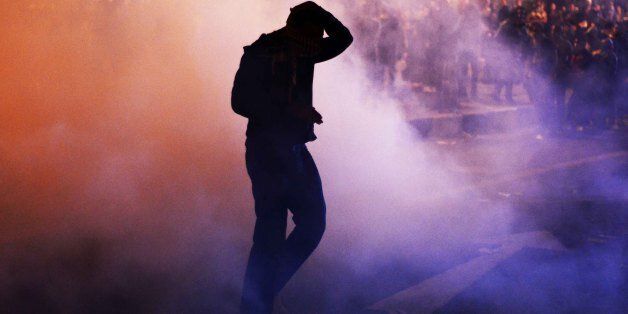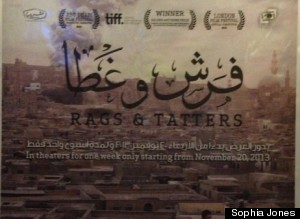
CAIRO -- When Egyptian director Ahmad Abdalla decided to make "Rags and Tatters" (or "Farsh w’ Ghata" in Arabic), a film about the 2011 revolution, he chose to take the audience on an uncomfortable journey.
There are no scenes of surging protests. No contagious revolutionary fervor. Instead, the audience travels to Cairo’s poorest neighborhoods, alongside a nameless convict who, like more than 20,000 other prisoners during the revolution, was set free. Through long scenes, many without dialogue, the film shows a different side of the uprising in gritty, often confusing detail. In fact, the film isn’t about the revolution at all, but rather, the narrative of one man navigating his country in the midst of upheaval.
"What we see is a story -- a simple story," Abdalla said in an interview with The Huffington Post. The slow pace of the scenes nearly void of words indeed creates a simple, but incredibly complex story reliant on characters' emotions and actions.
"The film takes you on a journey," Abdalla continued. "In every place, you have to stop and spend time with these people."
And that is exactly what I did on Thursday night. In a movie theater in Cairo, surrounded by teenage Egyptian boys and aging couples alike, I sat for an hour and a half watching "Rags and Tatters." During every scene, I was taken into the character’s private moments: at his family home, a Coptic funeral, a mosque, sectarian clashes. Like it or not, Abdalla’s film forces you to think -- and to feel.
As the main character in the film makes the dangerous journey back home to his family in Cairo, he comes bearing a cell phone video of the prison outbreak. "I made this video for people to know what happened," he said, narrating the rough footage. This sentence is replayed throughout his journey, as if a mantra for the film itself.
After the revolution, Abdalla was filled with questions and uncertainty. He said the only way for him to address these questions was through "Rags and Tatters." But the standard account of the Jan. 25 uprising is not told. The big picture isn’t addressed at all. Instead, the underbelly of the story is brought to life.
"I wanted to have everything related to the revolution in the background," Abdalla said. "The main issue is the current situation, the right here and right now for these people."
The lack of attention on the events in Tahrir Square effectively puts the focus on the more palpable issues that fueled the demonstrations -- government corruption, a crumbling infrastructure and a stark lack of economic opportunities for the majority of Egypt's people.
While the story alone was tough to capture on screen, the film crew also ran into trouble getting government permission to film in places like mosques. Many films have scenes set in mosques, Abdalla said, but the government delayed production for five months before eventually denying him official permission.

Premiered at the Toronto International Film Festival in September, the film has made its way through a handful of other festivals around the world, and it will soon come to the United States.
While it has done quite well internationally, Egyptian film critics have accused the film of insulting the armed forces and tarnishing Egypt's reputation, while singling out the film’s lack of dialogue as a fatal flaw. On Thursday, Egyptian news outlet Mada Masr published an article detailing what Josheph Fahim, an Egyptian film critic, calls a "stagnant state of Egyptian film criticism" producing "shallow and rigid reviews."
Earlier this week, Fahim tweeted: "Wanna examine how pitiful the state of Egyptian film criticism is? Read Egyptian reviews for @ahmada2’s 'Rags & Tatters.'" Defending the film, Fahim described it as "beautiful, deeply compassionate, incredibly sad and aesthetically audacious."
According to Abdalla, many of the Egyptian critics who have slammed his film don’t agree with its politics. "They don’t like portraying Egypt in this way," he said. "This is not Egypt for them."
But the mixed reviews don’t bother him. He made a film to raise questions and shock the audience. "I hope to make a change in Egypt," he said. “At all levels: artistic, political and social."
